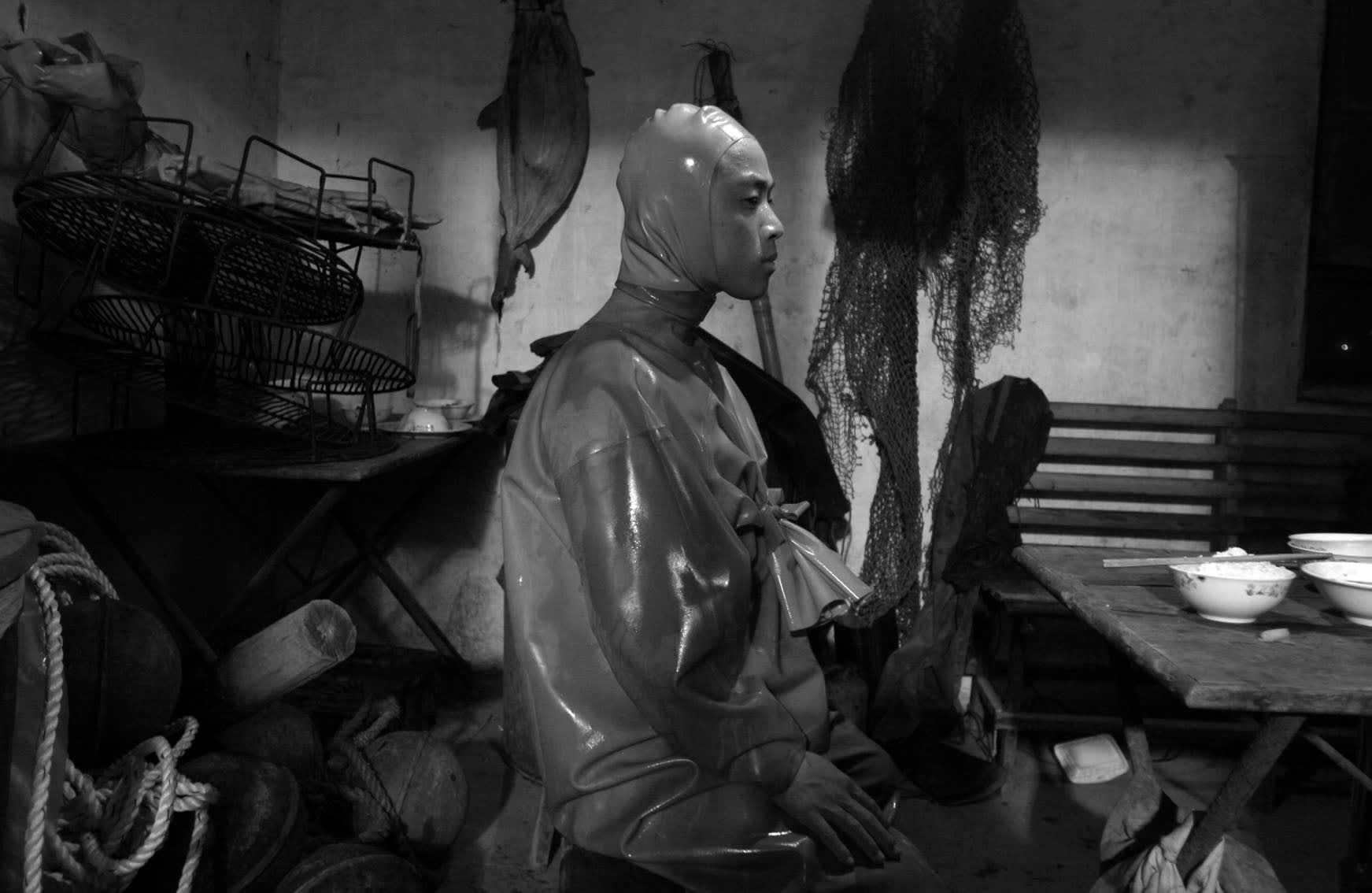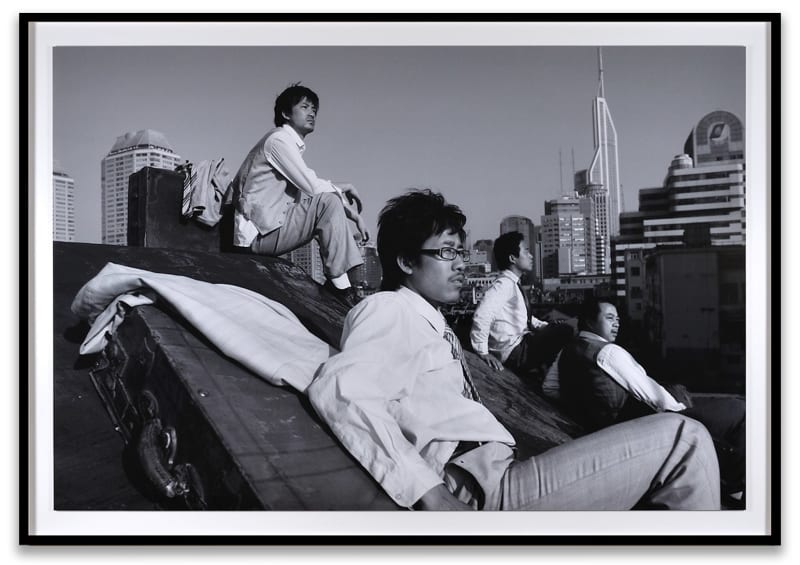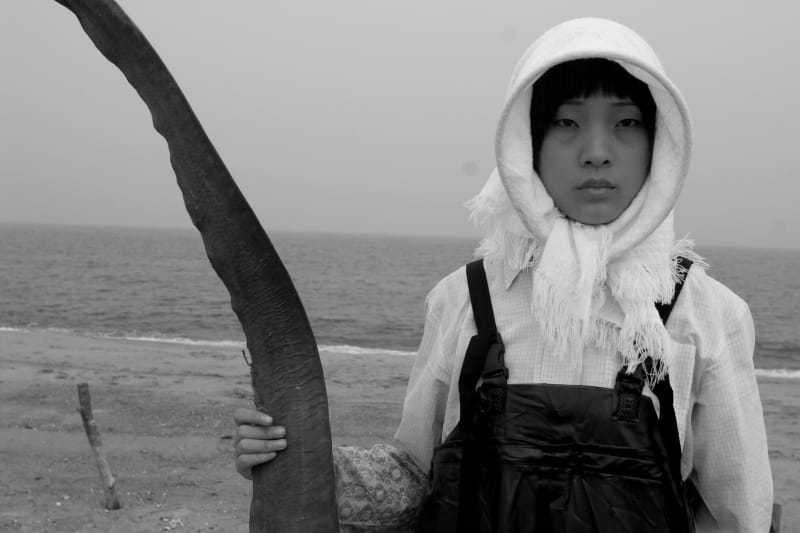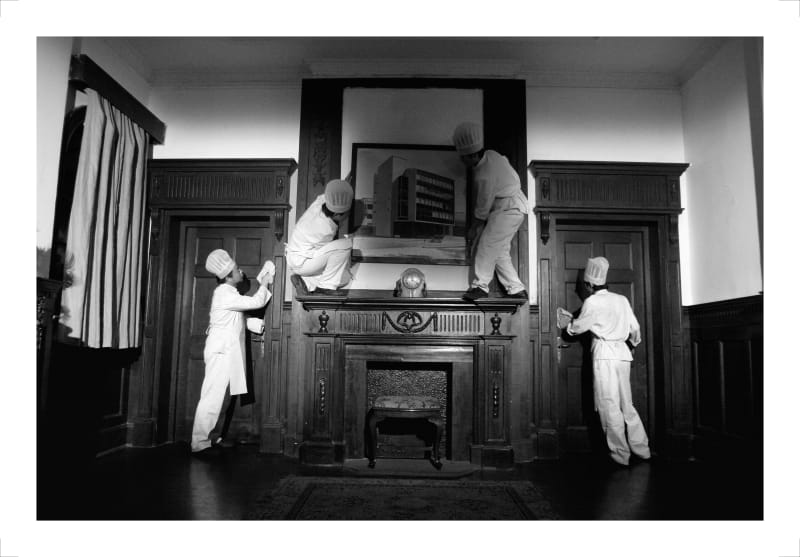Overview
"Seven Intellectuals in Bamboo Forest" (2003-2007) is Yang Fudong's attempt to develop a grand worldview in the form of an epic tale of a group of individuals defying the times in which they live. The title is borrowed from a popular legend of seven intellectuals who sought refuge from the chaos of the Warring States Period in a bamboo forest, where they indulged in serious talk unsullied by worldly matters. It is used as a metaphor for the resistance of the young Chinese who feel unable to keep up with the pace of change in China and, as a result, experience a kind of identity crisis. Showing no regard for normal social behavior, these intellectuals composed refined verses that expressed their feelings of resentment towards the age in which they lived. The five-part series focuses on seven young men and women in different settings, beginning with a mysterious mountain popular among Taoists, then proceeding to an urban setting, a rural setting with fields and paddies, and an island, before moving back to the city.
Yang Fudong
December 6, 2008 - January 10, 2009
Marian Goodman Gallery is delighted to present a selection of recent work of Yang Fudong, which will be on view at the gallery from Saturday 6th December 2008 and will run until Saturday 10th January 2009.
We will be showing parts 4 and 5 from the series entitled "Seven Intellectuals in a Bamboo Forest". The entire series of five black and white films was completed in 2007 for the 52nd Venice Biennial. Alongside the two films, which will be shown alternately, we will present a series of black and white photographs taken from the films.
"Seven Intellectuals in Bamboo Forest" (2003-2007) is Yang Fudong's attempt to develop a grand worldview in the form of an epic tale of a group of individuals defying the times in which they live. The title is borrowed from a popular legend of seven intellectuals who sought refuge from the chaos of the Warring States Period in a bamboo forest, where they indulged in serious talk unsullied by worldly matters. It is used as a metaphor for the resistance of the young Chinese who feel unable to keep up with the pace of change in China and, as a result, experience a kind of identity crisis. Showing no regard for normal social behavior, these intellectuals composed refined verses that expressed their feelings of resentment towards the age in which they lived. The five-part series focuses on seven young men and women in different settings, beginning with a mysterious mountain popular among Taoists, then proceeding to an urban setting, a rural setting with fields and paddies, and an island, before moving back to the city.
In Part 4, Yang Fudong evokes "a utopian feeling that relies on the power of the real. There's a lot of realism. Their living environment is maybe slightly dry, and the kelp is all coarse. It's a scenic place that makes people feel appreciative, but you don't see any appreciation. All the make-up indicates the powerful passage of time. There are actually two threads designed in the movie that define the dual identities. The first thread is a group of people searching for a port, walking in one direction; the other thread in this group is this group's daily labor and transformation. But since you brought up this topic, I was also thinking that if you're going to shoot emptiness facing emptiness, can you shoot emptiness against emptiness? When I was preparing for Part 5 and simultaneously editing Part 4, I faintly felt that Part 4 was still really empty, like a feeling of merely casual acquaintance. And then when I was shooting Part 5, I wasn't only thinking about the one part. I couldn't help but think about the previous four parts, and I wanted to add narrative."
One of the most important artists to emerge in contemporary China, Yang Fudong was born in Beijing in 1971 and trained first as a painter studying at The Academy of Fine Arts Hangzhou (1991-1995), a place known for its traditionally beautiful landscapes. In 1996 he took classes in the Department of Photography at the Fine Arts Academy and the Film Academy in Beijing. Developing a painterly approach to his lens-based photographic and film work, Yang Fudong began by depicting characters set against this familiar landscape until, after his move to Shanghai in 2002, he occasionally turned his focus to urban settings and to the polarity between city and country life. His films and installations are known for their atemporal and dreamlike quality, long, suspended sequences, dividing narratives, and multiple relationships and story lines. Much of his work has addressed the ideals and anxieties of a new generation - a developing society still in the process of adjusting its consciousness to the material conditions of the times. His films often depicts his characters as cognizant, or sometimes not, of the traditions, values, and weight of the past.
Recent exhibitions of Yang Fudong's work include a solo exhibition at Museo de Arte Contemporaneo Esteban Vicente, Segovia, Spain in 2008 and at Phoenix Art Museum, USA. One-man shows in 2006 include Parasol Unit foundation for contemporary art, London and Marian Goodman Gallery, New York; and in 2005 The Stedelijk Museum, Amsterdam, the Castello di Rivoli, Turin as well as Kunsthalle Wien, Vienna; In addition his work has been presented at the Renaissance Society, Chicago in 2004; and at Moore Space, Miami in 2003.
A selection of group exhibitions in 2008 include: The Avant-garde China: Twenty years of Chinese Contemporary Art, The National Art Center Tokyo, Japan; China Power Station: Part III, MUDAM – Musée d'Art Moderne Grand-Duc Jean, Luxembourg; in 2007: 52th Biennale di Venezia, Venice, Italy; The Real Thing: Contemporary Art From China, Tate Liverpool, England; China Power Station: Part II Astrup Fearnley Museet for Moderne Kunst, Olso, Norway; China Welcomes you… Kunsthaus Graz, Austria; Yang Fudong's work has been included in the Asia-Pacific Triennale of Contemporary Art and at Queensland Art Gallery, Brisbane in 2006, as well as Do You Believe in Reality?, 2004 Taipei Biennial, Taiwan; Liverpool Biennial; Time Zones: Recent Film and Video, Tate Modern, London, England; in 2003: Happiness, A Survival Guide for Art and Life, Mori Art Museum, Tokyo; Outlook, Athens, Greece; Chinese Pavilion and Utopia Station; Alors La Chine, Centre Pompidou, Paris; in 2002: Urban Creation, 4th Shanghai Biennale, Shanghai Art Museum; Documenta 11, Kassel; and in 2001: The Yokohama Triennale, Yokohama, Japan; Istanbul Biennale, Istanbul, Turkey.









